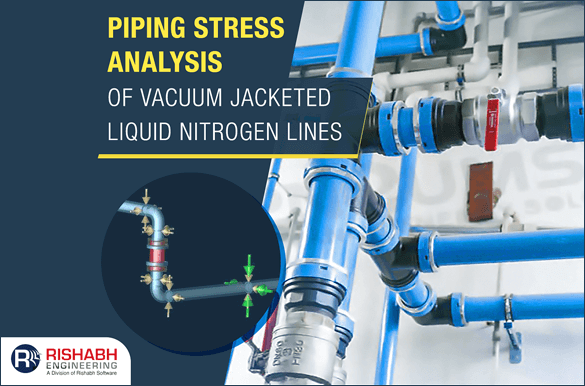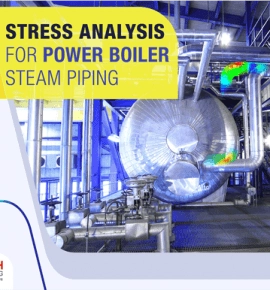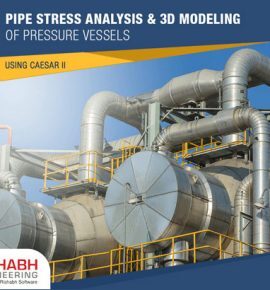
Project Information
Piping Stress Analysis of Vacuum Jacketed Liquid Nitrogen Lines
Description
Client
A leading North American manufacturer of cryogenic gas equipment and systems engaged in providing engineering, design, fabrication, installation, and repair services for the food packaging, pharmaceutical, semi-conductor, medical gas pipe, and more.

Engineering Requirement
Rishabh Engineering, as an engineering service partner, executed pipe stress analysis for vacuum jacketed liquid nitrogen lines having a design temperature of -320oF and pressure of 200 PSIG. We were responsible for the following:
- Ensure that all loads (sustained, occasional and thermal) acting on the piping system are within the code limits
- Avoid piping stresses beyond the permit as referenced by international codes and standards
- Avoid excessive stresses in the supporting or restraining elements
- Avoid unintentional disengagement of piping from its supports
- Avoid excessive piping sag in piping systems which need drainage slope

Delivered
- Piping Stress Analysis Report
- CAESAR native files (C2. File)
Want to know more about this project?
Our Recent Projects
Connect with us for all your engineering design needs
US Toll-Free Phone
+1-877-747-4224
India Phone
+91 (265) 2680159
Drop Us An Email
sales@rishabheng.com
Our Offices
USA, UK & India (Head office)
Ready to work with us? Tell us more
Our Recent blogs
If you are trying to determine how to choose a piping design partner who truly adds value, here are the essential criteria. Plus, how Rishabh Engineering checks the box on each one.
In the complex world of process industries, effective communication and documentation are crucial for ensuring safety, efficiency, and successful operation. The Piping and Instrumentation Diagram (P&ID) is vital in this domain. With this article, we will explore what is P&ID, its significance across diverse industries, the symbols employed, and a comprehensive guide on crafting them.
In this blog, we’ll explore the frequently used equipment P&ID symbols, while explaining their function, significance, and how they contribute to effective system design.








